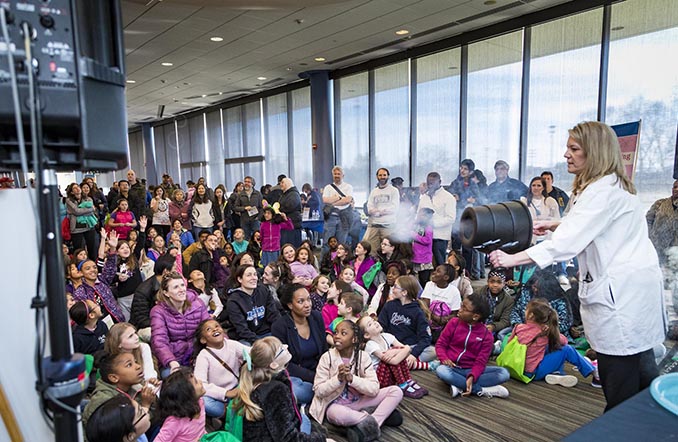Focus on Diversity and Inclusion
“There’s an immense need for STEM professionals to keep the U.S. competitive in fields like health care, science, technology and defense,” Carr said. “We need to make sure everyone feels like they can participate in these fields, including those in communities that have previously been marginalized and underrepresented.”
Making sure that those communities are represented in APL’s STEM programs has been a key goal.
MESA’s goal, in particular, is to increase the number of diverse college and career-ready students in the nation, starting from a young age.
“Beginning our pipeline by focusing on women, minorities and historically underrepresented populations through MESA sets the tone for the entire APL STEM portfolio of programs,” Carr said.
In fact, 66% of participants in APL’s MESA program are from minority backgrounds, and 51% are female. This trend continues in APL’s STEM Academy, where 72% of students are from minority backgrounds and 53% are female. Finally, 67% of ASPIRE interns are from minority backgrounds, and 47% are female.
“We’re constantly paying attention to the barriers that typically exist for those populations and trying to make sure we are lowering or eliminating those obstacles,” Carr said. “By doing that, we have the outcomes that we see for minority and female participation in our programs.”
Carr also credits some success to the hundreds of APL staff volunteers who teach courses or mentor students. In 2022, more than 640 staff members participated in APL STEM programs.
Still, he stressed that APL STEM’s work is never done. The team is always seeking to better understand the impact of its work and find ways to improve its programs and reach more students. In coming years, Carr hopes to conduct a long-term study to determine how many students from APL STEM programs attend college and major in STEM fields.
“I don’t feel like we can ever rest on our success,” Carr said. “There are always things we can improve, so we have to make sure we continue to evolve with the needs of our students.”



